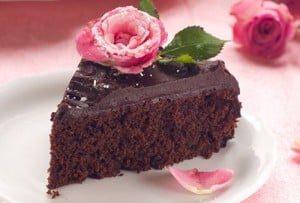
Flowers that you can safely eat
During the winter, when it’s cold and rather unpleasant outside, we tend to huddle up indoors and eat more than usual. Our food choices are often something along the lines of pasta, stews and other kinds of so-called comfort food. After such a heavy meal, we normally feel so stuffed that we all we can contemplate doing is curling up and taking a nap. During the warmer months, we tend to steer clear of heavy foods and salads take their place on our plates. If you are tired of all the usual suspects in terms of salads, you can always spice things up by adding some edible flowers. Of course, shopping for edible flowers is a bit more involved than shopping for a pretty bouquet at your local florist.
You need to do some research about what you will find in season as well as any possible reactions you may have to ingesting particular flowers. There are a great number of plants and flowers out there that are not suitable for consumption. Another important point to remember is that some plants have edible flowers while other parts of the plant are not safe to eat. If the flower petals and leaves are safe but the stem is not, for example, then you should only add the edible parts of the plant to your diet.
Some of the most popular edible flowers include roses, pansies, carnations, lavender and various fruit blossoms like apple, banana and plum. In terms of fruit blossoms, it is also important to research the main plant properly in order to ascertain its exact variety. Some fruit blossoms are safe to eat but there may just be a particular variety that should be avoided.
The petals of chrysanthemums, calendulas, sunflowers and gladiolus flowers are safe to eat but the rest of the flower should be avoided completely. Agapanthus, dahlias, yarrow, delphiniums, poppies, cyclamen and tulips are just a few of the most flowers that should not be consumed whatsoever.
Now, some might think that non-edible flowers can still be used to decorate plates but this is still not advisable. If you are hosting a meal and inviting any number of guests, you would not want any one of them to accidentally consume a flower or part of a plant that could cause them harm in any way. This is even more important if your guest list includes children.
Another important point to bear in mind when selecting any kind of edible flower or plant material to add to your food, is that organic is best. Non-organic flowers, like non-organic fruit and vegetables are sprayed will all sorts of pesticides and chemicals to help them grow and keep bugs away. Now, while you can still wash a tomato, cucumber and your lettuce leaves, you can’t wash the delicate petals of a flower properly.
If you want to introduce flowers and other parts of plants into your diet by adding them to your food, you can get some great recipes by simply searching online. While some dishes require flowers as a garnish or just a finishing touch, others rely on the flavour of the petals to enhance the meal itself. While looking through the various recipes, you will also get a better idea of which flowers are safe to eat and which flavours they are best combined with. Some flowers have a bitter taste, others a quite sweet and others are best known for their flower. Knowing how to pair them up properly with other ingredients will ensure culinary success!

